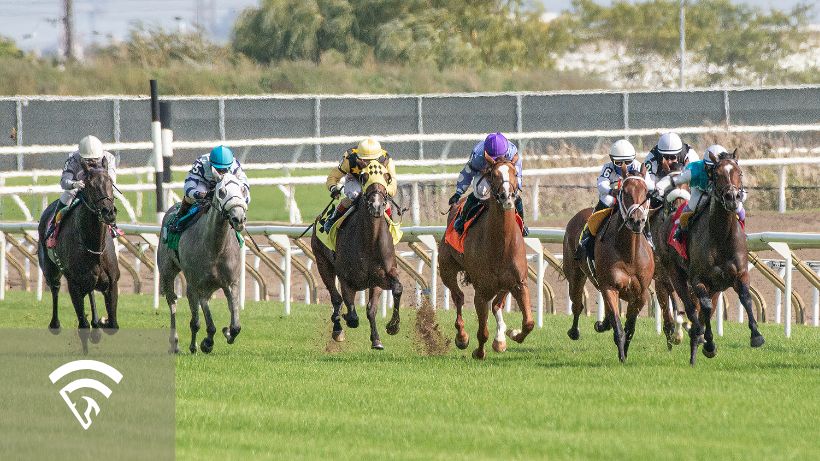What is a Furlong?
A furlong is a unit of distance used in horse racing to measure how far a race is run. One furlong equals one-eighth of a mile, or 220 yards (660 feet). The term dates back to Old English agricultural measurements but remains a standard in modern North American racing.
Understanding furlongs is essential for interpreting race distances, comparing performances, and identifying which horses are best suited for sprint races vs. route races.
How Many Furlongs Are in a Race?
Races in North America are typically measured in furlongs up to a mile and then in miles beyond that. Here’s a quick breakdown of common race distances and their furlong equivalents:
- 4 furlongs = ½ mile (commonly used for workouts or very young horses)
- 5 furlongs = ⅝ mile
- 6 furlongs = ¾ mile (classic sprint distance)
- 7 furlongs = ⅞ mile
- 8 furlongs = 1 mile
- 9 furlongs = 1⅛ miles
- 10 furlongs = 1¼ miles (Kentucky Derby distance)
This measurement system allows handicappers to quickly compare how horses perform at different distances and whether a horse is stretching out, cutting back, or staying in its preferred range.
Furlongs and Racing Styles
The number of furlongs in a race plays a direct role in the pace, energy distribution, and types of horses likely to succeed:
Sprint Races (5–7 furlongs):
- Favor early speed and tactical positioning.
- Horses that break quickly and maintain speed often dominate.
- Great for sharp, fast horses or those coming off sharp works.
Route Races (8+ furlongs):
- Require stamina and the ability to rate and finish strong.
- Horses need to conserve energy and often make a late move.
- Conditioning, pace scenario, and distance pedigree matter more.
Knowing how your horse performs at different furlong distances is key to evaluating whether today’s race fits their ideal style and profile.
Furlongs in Workout Times
Workout distances are also measured in furlongs, especially in the workout tab leading up to a race. For example:
- 3F work = 3 furlongs = ⅜ mile
- 5F work = 5 furlongs = ⅝ mile
A 5F bullet workout in 59.4 seconds signals sharpness and stamina—a valuable data point when handicapping a returner or debut horse.
How EquinEdge Factors in Distance
EquinEdge considers furlong distances in several ways:
- Genetic Strength Rating (GSR): This rating factors in the horse’s breeding and how well-suited it is for today’s distance and surface.
- Win %: Based on historical data and projected performance, this metric reflects how competitive a horse should be in races at the given distance.
- Surface + Distance Filters: When used with pace, form, and track bias, EquinEdge’s insights help identify horses ideally matched to today’s furlong range.
You don’t have to memorize every conversion—EquinEdge does the heavy lifting and surfaces the horses best equipped for today’s conditions.
Final Thoughts
While the term “furlong” might feel old-fashioned, it’s a fundamental part of understanding horse racing distances. From workouts to final times, this measurement helps define a horse’s style, stamina, and suitability for specific races.
For serious handicappers, furlongs are more than just numbers—they're clues to finding the right horse at the right distance, and ultimately, the right bet.
